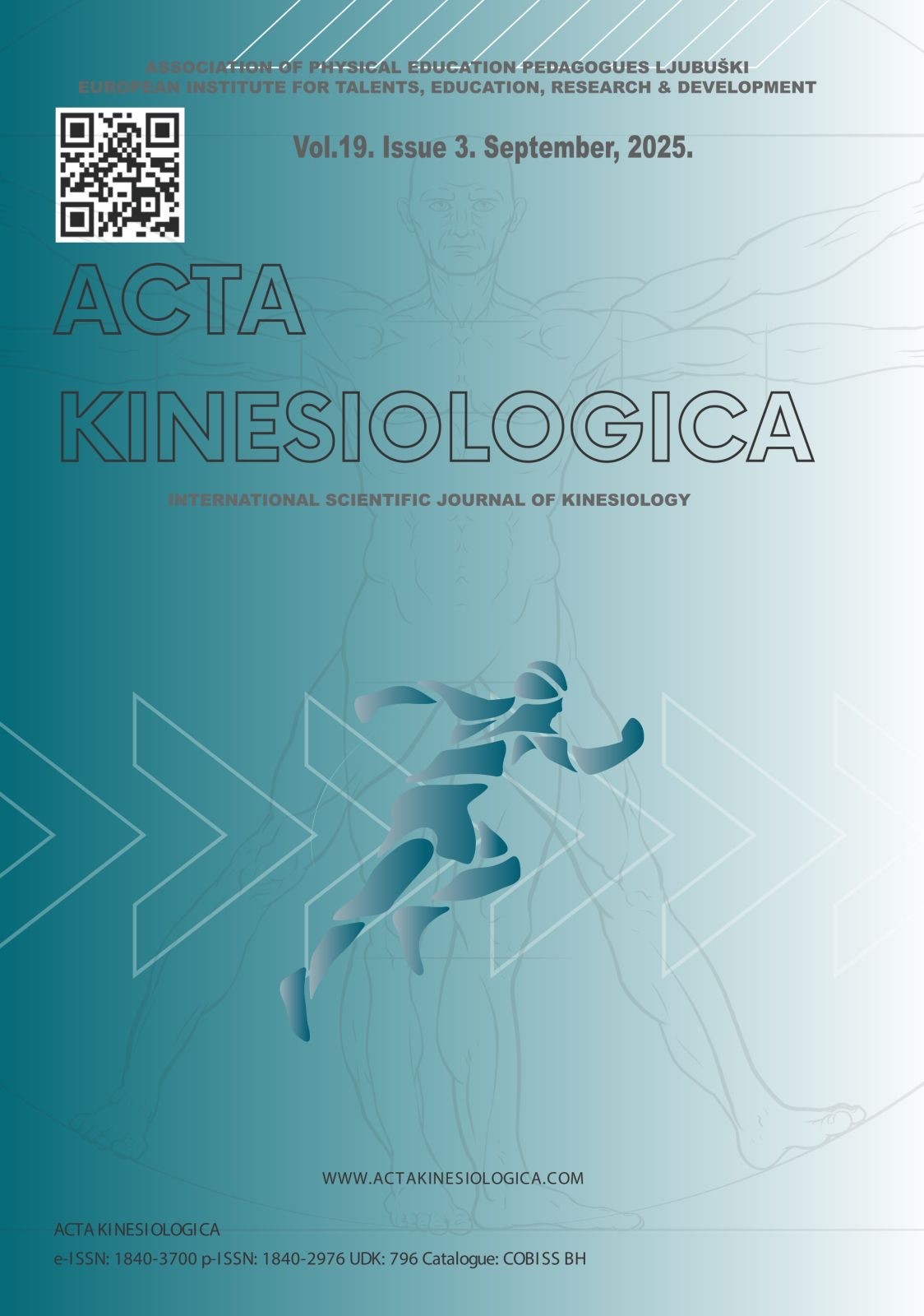Analysis of self-reported declared physical activity among female and male first-year students using the International Physical Activity Questionnaire - Short Form (IPAQ-SF)
Keywords:
physical activity, IPAQ, ; students, body mass index, SlovakiaAbstract
Purpose: The present study aimed to assess the PA levels in first-year Slovak university students, with an analysis of
differences in the amount of energy expenditure related to PA, the intensity and frequency of PA undertaken by them
according to gender and BMI category.
Methods:The research was conducted among 1,665 first-year university students from all public universities in Slovakia.
The International Physical Activity Questionnaire - short form (IPAQ-SF) was used to assess PA levels, and information on
body weight and height was used to calculate body mass index (BMI). A total of 1,314 questionnaires were included in the
final analysis.
Results: The results of our study indicate that more than 76% of students engage in moderate or high levels of PA, with over
41% achieving a high PA level. Comparison of the energy expenditure of male and female students according to the IPAQ-SF
protocol clearly confirmed that women are less physically active than men (P≤ .001). The analysis of differences in energy
expenditure between underweight, normal-weight, and overweight/obese subjects showed no statistically significant
differences within each PA level, but underweight participants spent significantly more time sitting than normal-weight
individuals (P= .023). Additionally, underweight individuals had significantly lower energy expenditure for TPA compared to
overweight/obese individuals (P= .034).
Conclusions: An interesting, albeit unexpected, finding that contradicts common assumptions is the observation that
underweight students spend significantly more time sitting than those with normal weight. Further research should explore
potential explanations for this phenomenon. Psychological factors, such as depression, anxiety, or eating disorders, may
contribute to reduced appetite, increased fatigue, and subsequently, lower PA engagement.





